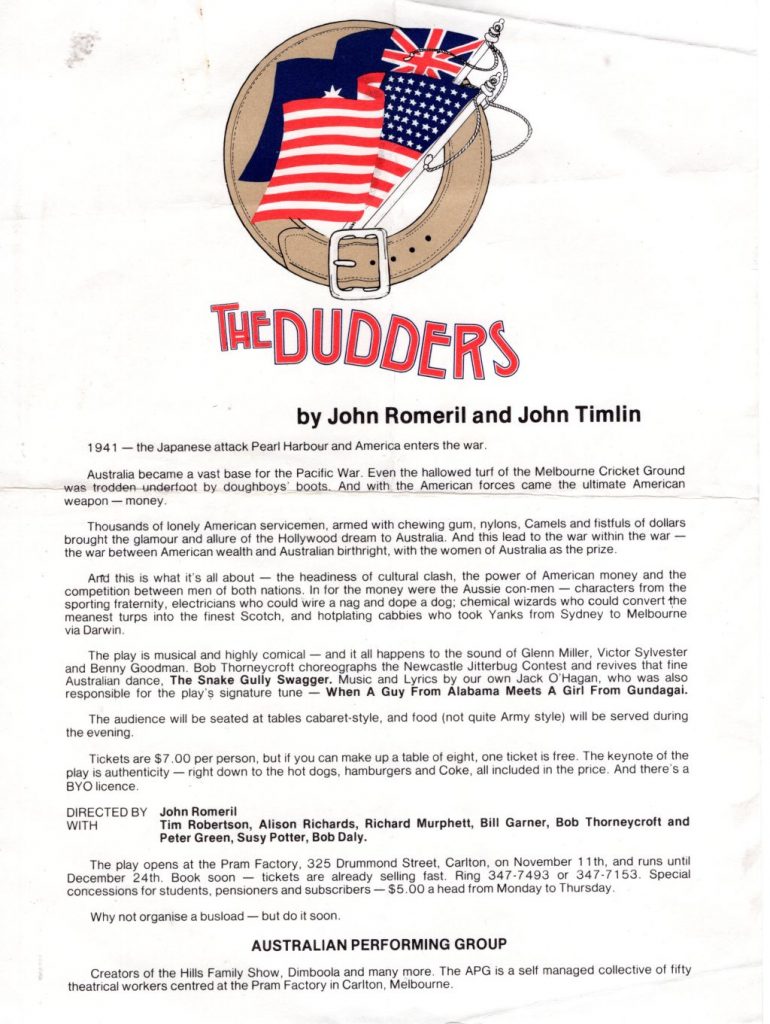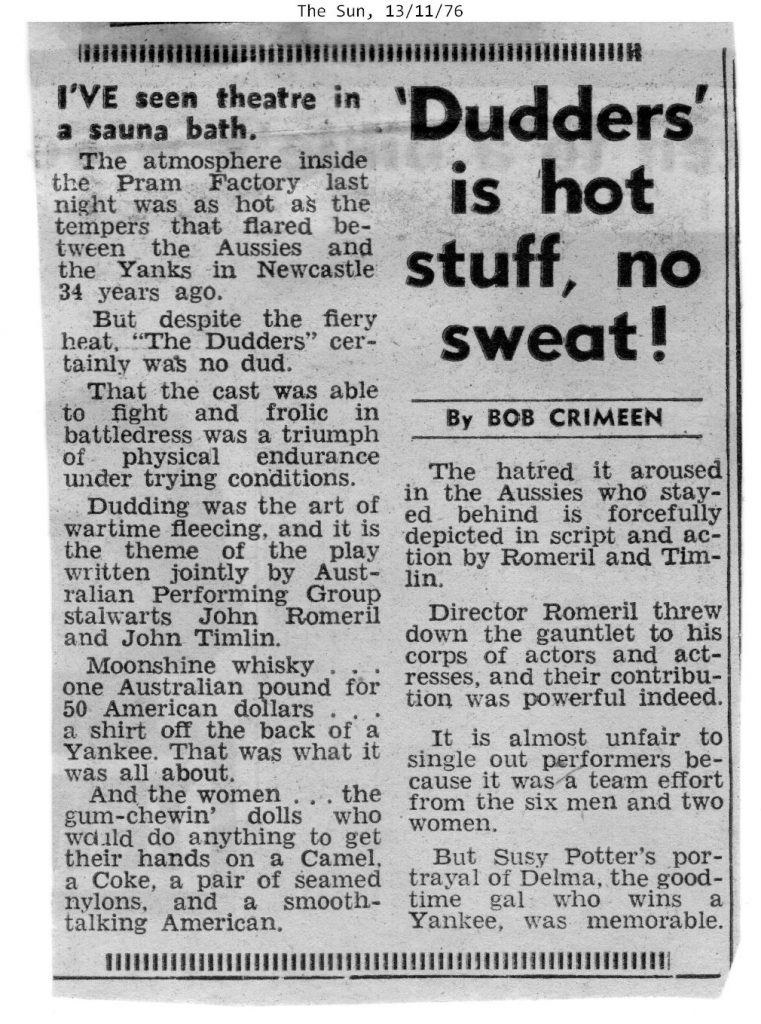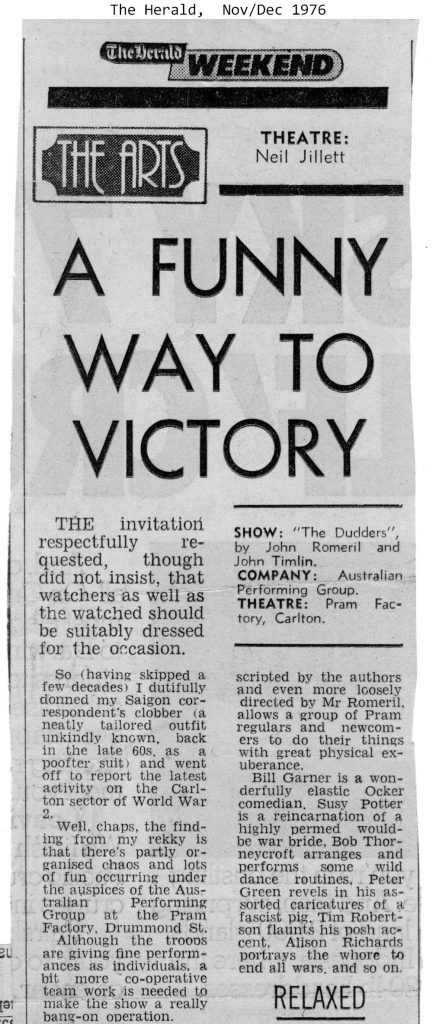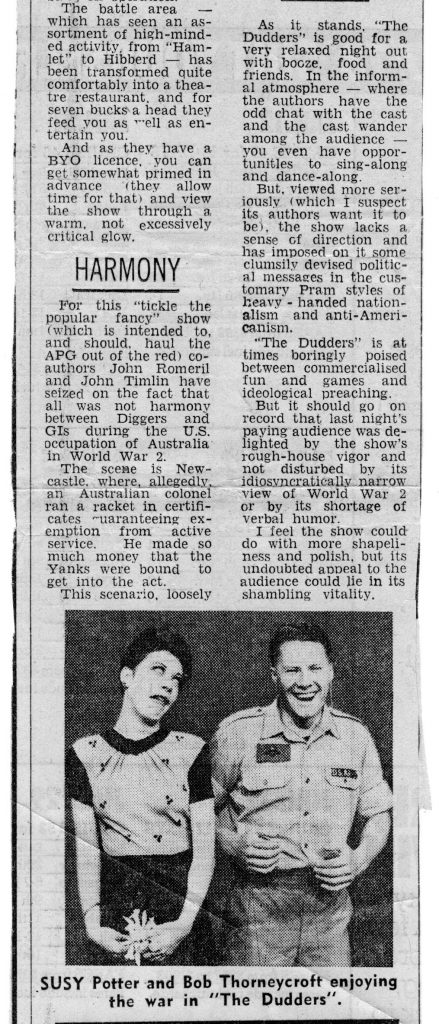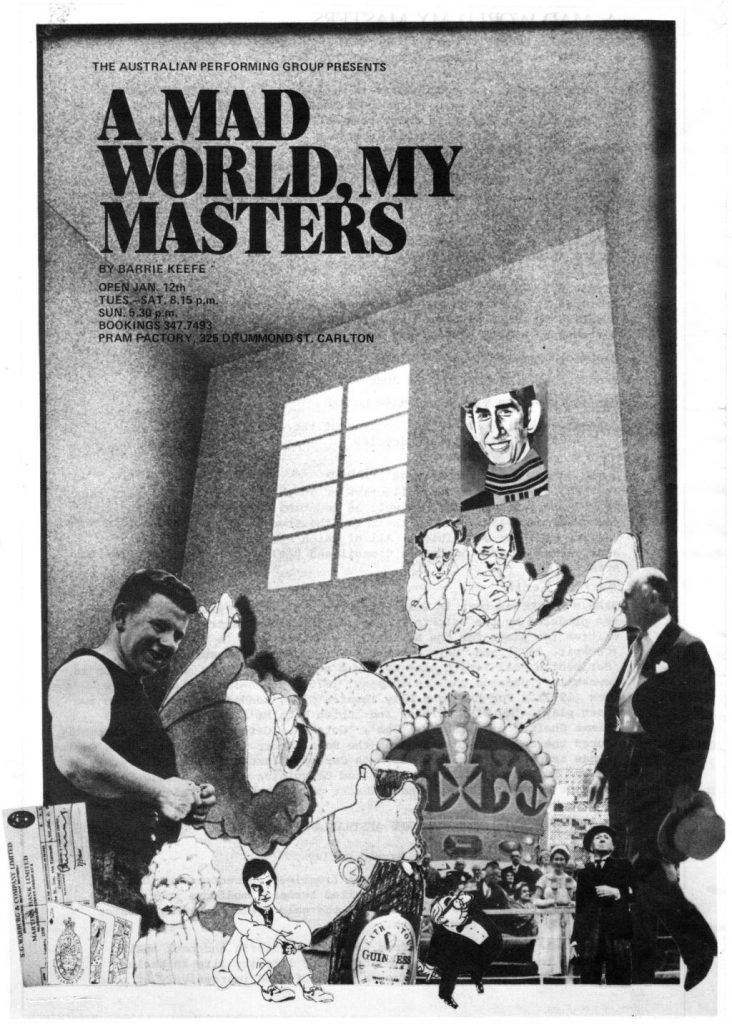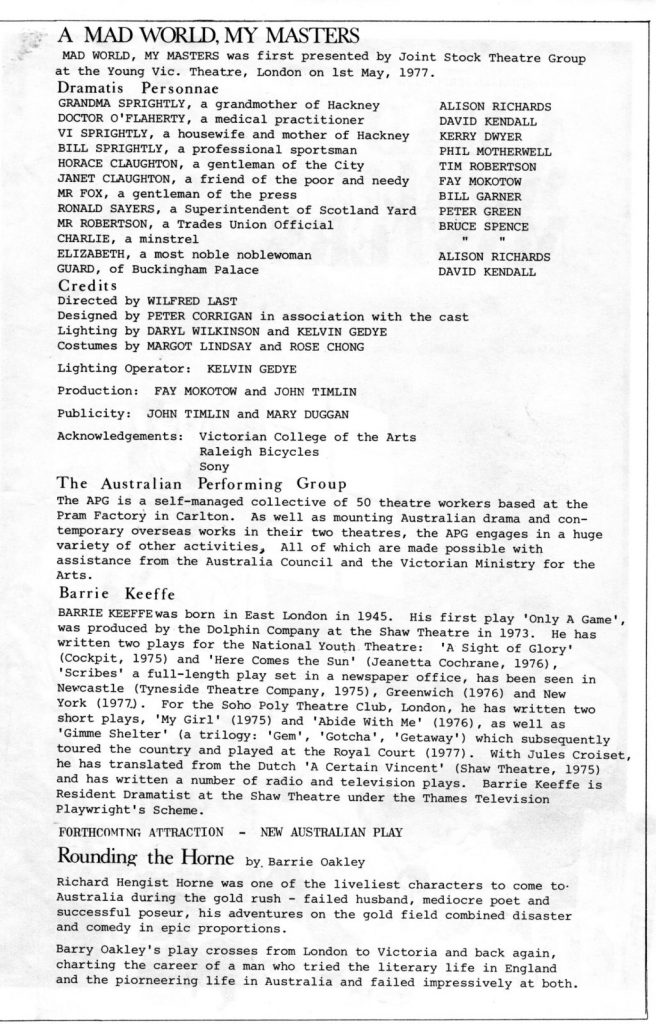
John Timlin, pictured with son, Michael, in September 2007. Photo by Craig Sillitoe. The Age, 2/9/2007.
Written by John Timlin, “Pramocracy – The Alternative Theatre in Carlton”, has long been an important source for researchers and writers looking at the history of the Pram Factory Theatre and the Australian Performing Group.
For most of the 1970s, John Timlin was the APG’s publicist and quasi administrator. He also acted as agent for several writers, including Jack Hibberd and John Romeril.
“Pramocracy” (as it has become known) appears to have been written a few months after the Federal Election held in May 1974, for Timlin refers to that election as if it had occurred fairly recently. (At that election Gough Whitlam’s Labor Party was returned to Government following a double dissolution.) At the time the APG was, according to Timlin, suffering an “identity crisis”.
The document published below in its entirety is a dog-eared draft of “Pramocracy” with John’s handwritten heading and alterations on it.
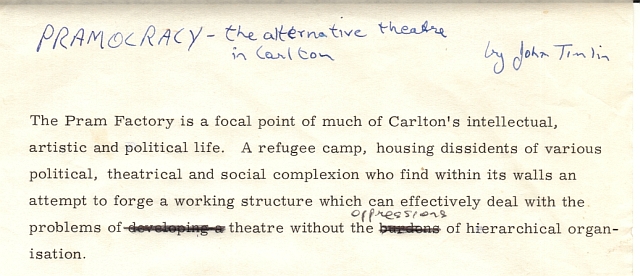
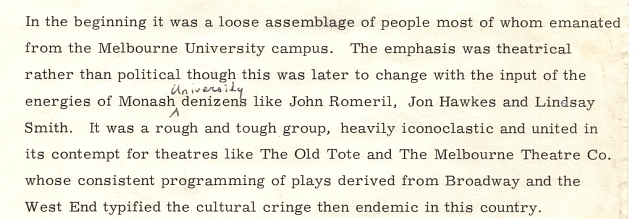

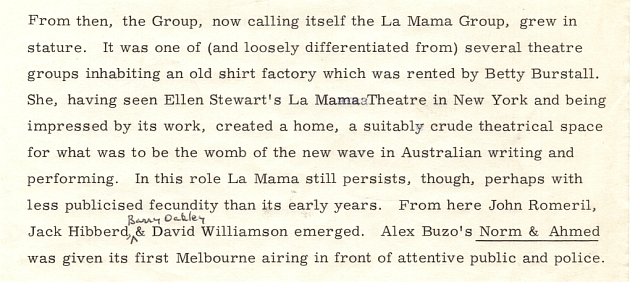
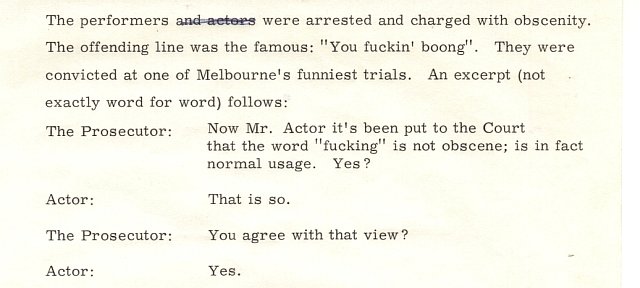
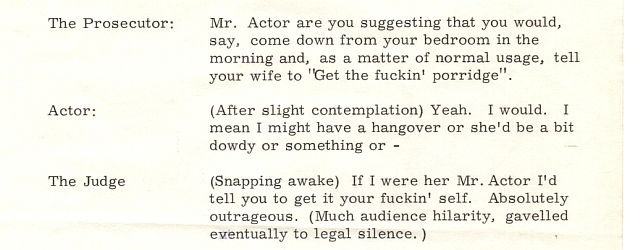
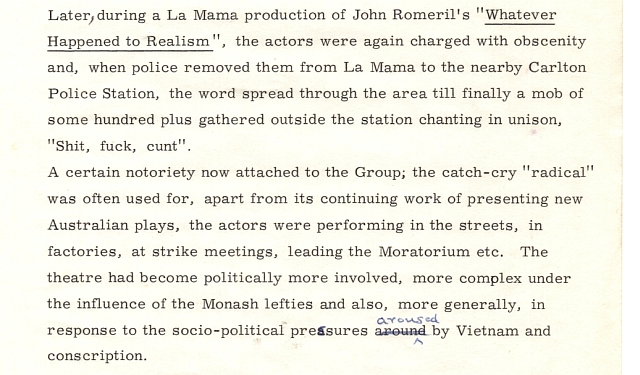



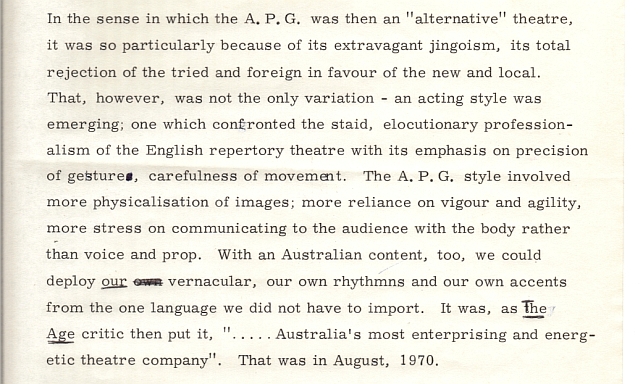
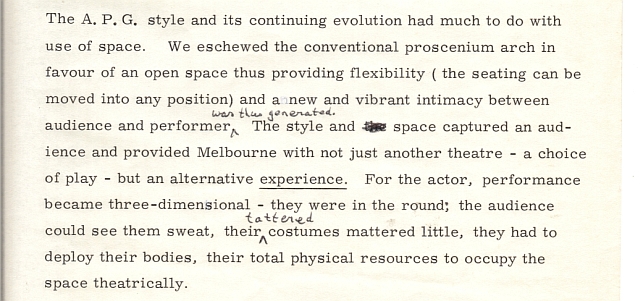



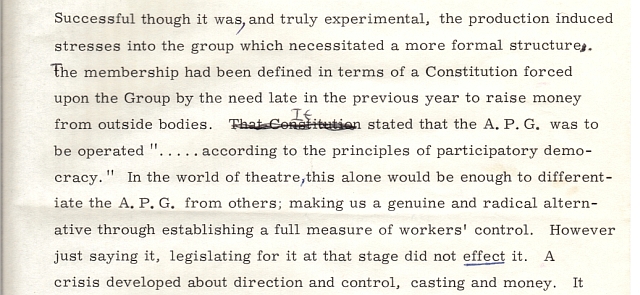
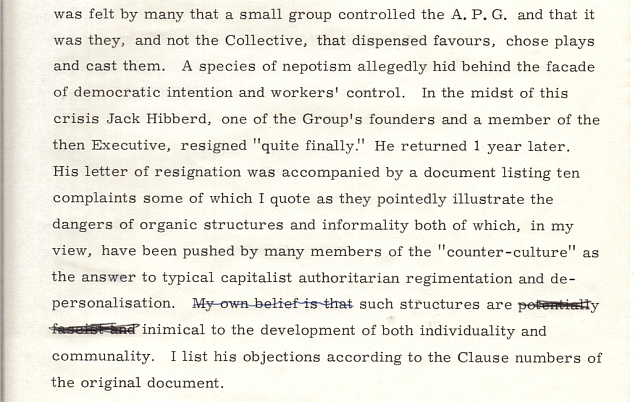



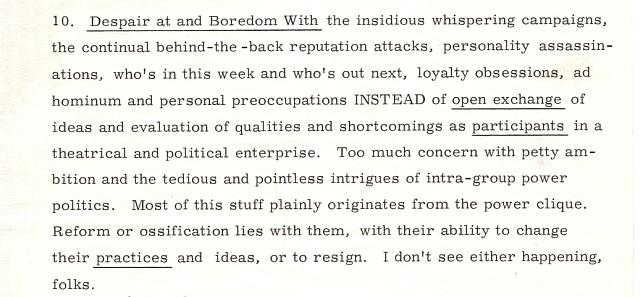
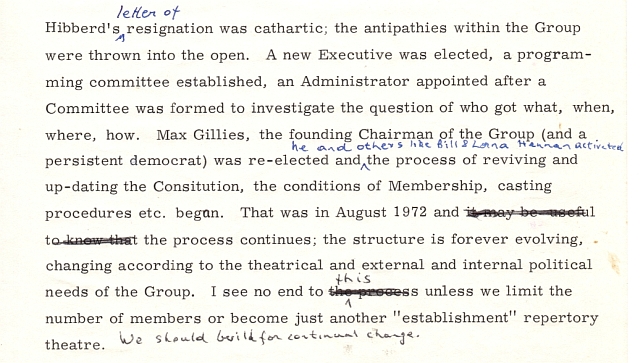
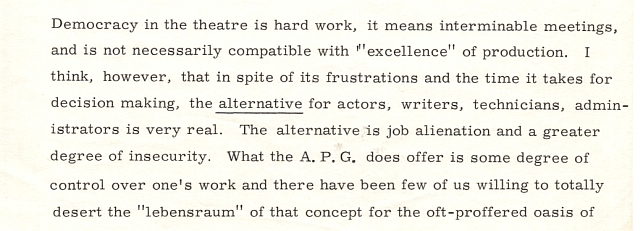
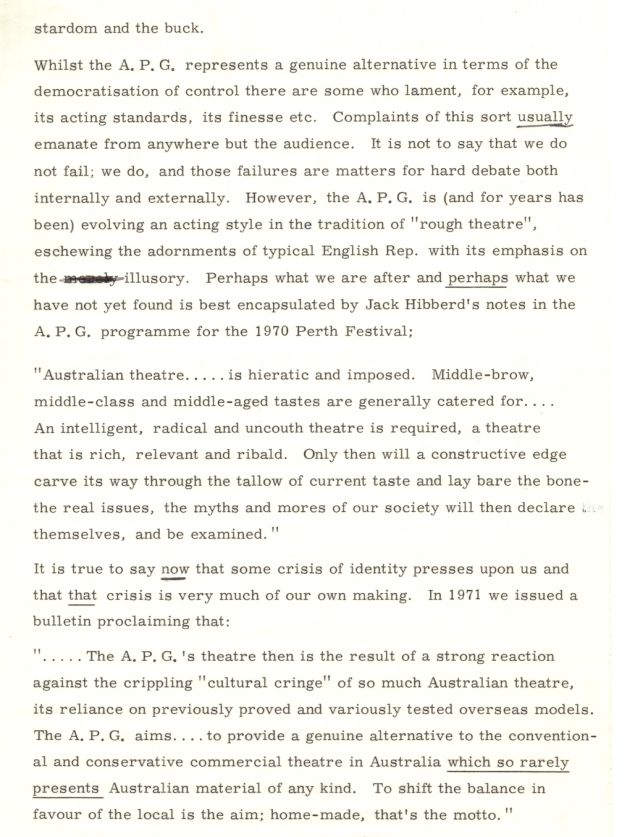
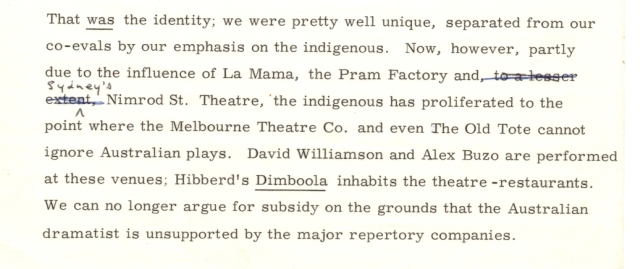
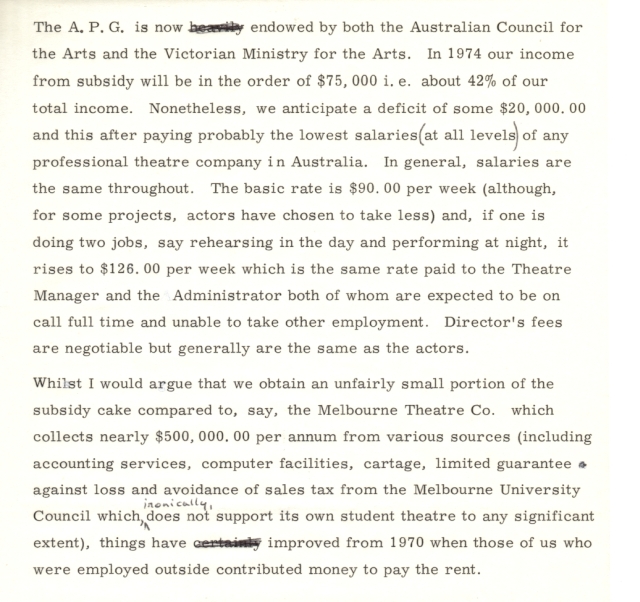
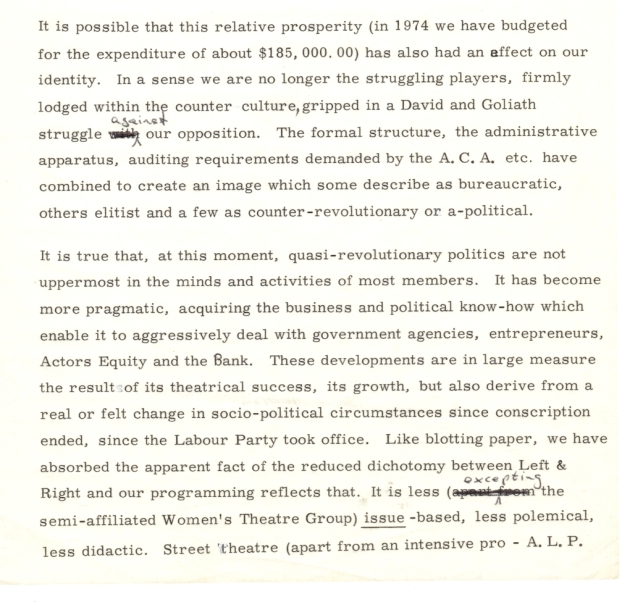
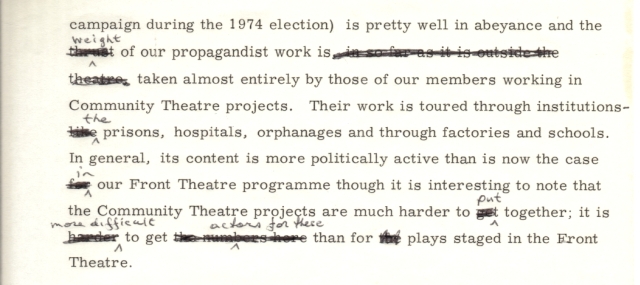
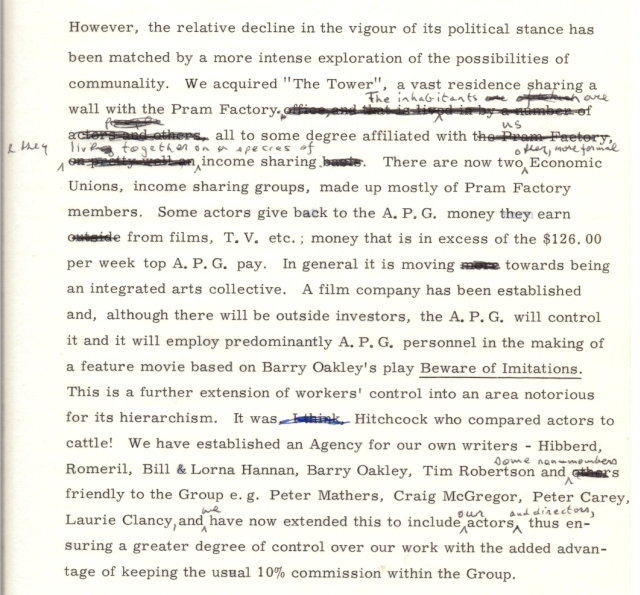
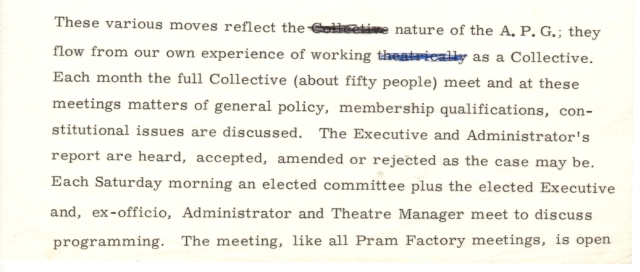
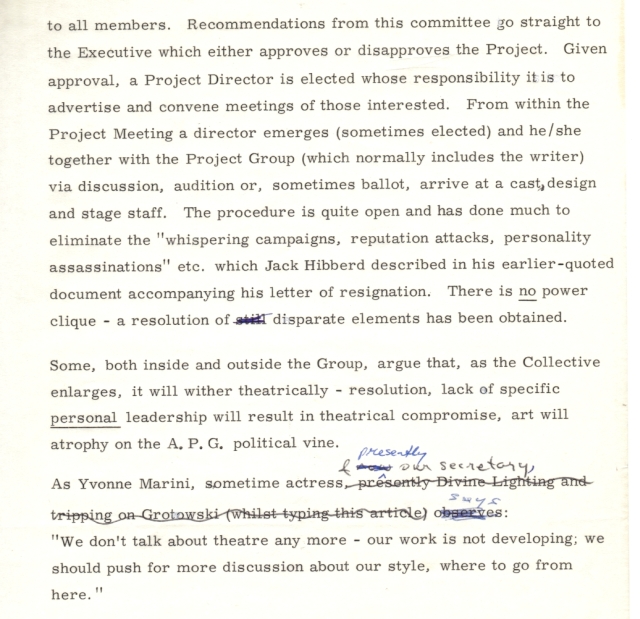
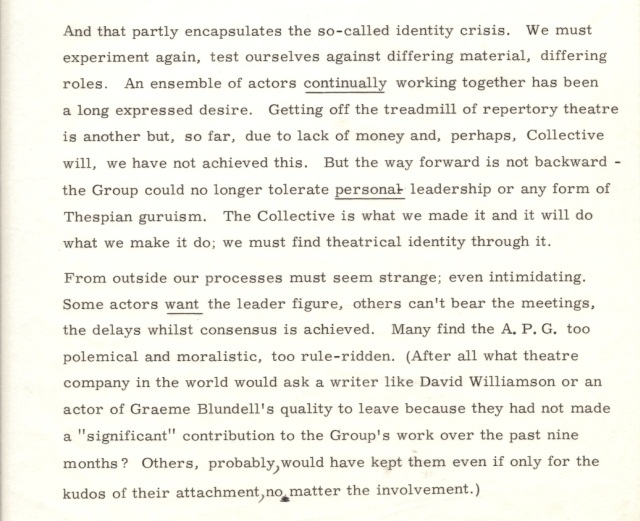
Other versions of the paper
(added to this blog on 28/8/2013)
A least one other version of this paper – with additional paragraphs and with paragraphs deleted – has been published elsewhere. The version published on the Pram Factory website (developed by Sue Ingleton) and published in The Way Out magazine (which now appears on its website), has the following additional paragraphs appearing at the end:
“This seeming masochism is, however, germane to democratic participation; workers’ control of the theatre. The fact of stardom, fame etc. cannot entitle one person to have a vote affecting the lives of others whilst they are, possibly, so distant from the theatre as to be ignorant of the issues, arguments and personalities.
The Collective has, in this respect, tightened somewhat – if a member is absent from four consecutive monthly Collective meetings, membership (subject to appeal) lapses and the privilege of priority for employment disappears. This, of course, allows us to change;; those who opt for the security and comparatively high pecuniary rewards of lengthy film, television or theatre contracts are exercising their choice and, by so doing, effectively resigning and creating space for others, thus injecting new blood and, potentially a new theatricality into the Group.
Somehow, for journalists, Arts Council people and theatre workers outside, there is something difficult about accepting the actuality of democratic control in the APG. They want to believe in leaders, authority figures, etc. They find the oppositionist stridency of the APG somewhat uncomfortable, the postures that emerge from its moral well-spring difficult to live with. Doubtless, its stance on many issues can transmute into image-making rhetoric but there is a certain purity of intention, not yet fully articulated theatrically, which may enable the group to persist and withstand the fiscal and critical difficulties which always are at the jugular of innovative, anti-establishment theatre groups. In March 1972, in a letter to the Group, sometime member, Margaret Williams, now a critic and academic at the University of NSW, wrote:
‘… I think that what is in many ways the Group’s strongest quality is also its least endearing quality – at least to those outside it – namely, a kind of (dare I say it?) arrogance; a messianic certainty of its anointed role as custodian of the Australian drama … I think that quality is an asset, and it may well be that that is the magic talisman which will keep the APG alive and kicking where so many other groups, equally committed, have failed …’.
Drama is a communal art. It needs writers and actors and technicians and ticket sellers and designers and painters of walls. Without each other, not one of these people would be meaningful. In so far as the APG is an alternative, it is so because its political form is such as to give each person a share in deciding what affects another. It is frightening to each of us at different levels, for different reasons but, for those of us who choose to remain, it is the best way to work; trust is the only way in which the theatre can take those risks necessary to create something new.”
On the other hand, the following parts from the original scanned document appearing on this blog do not appear in the other version just mentioned:
- The dialogue between The Prosecutor and Actor: see sections 5 and 6.
- All the writing contained in the scanned document between the words “… stardom and the buck” and “It is true that …”. This is 6 paragraphs with a total of approximately 670 words.
END OF THIS POST.

HOME
